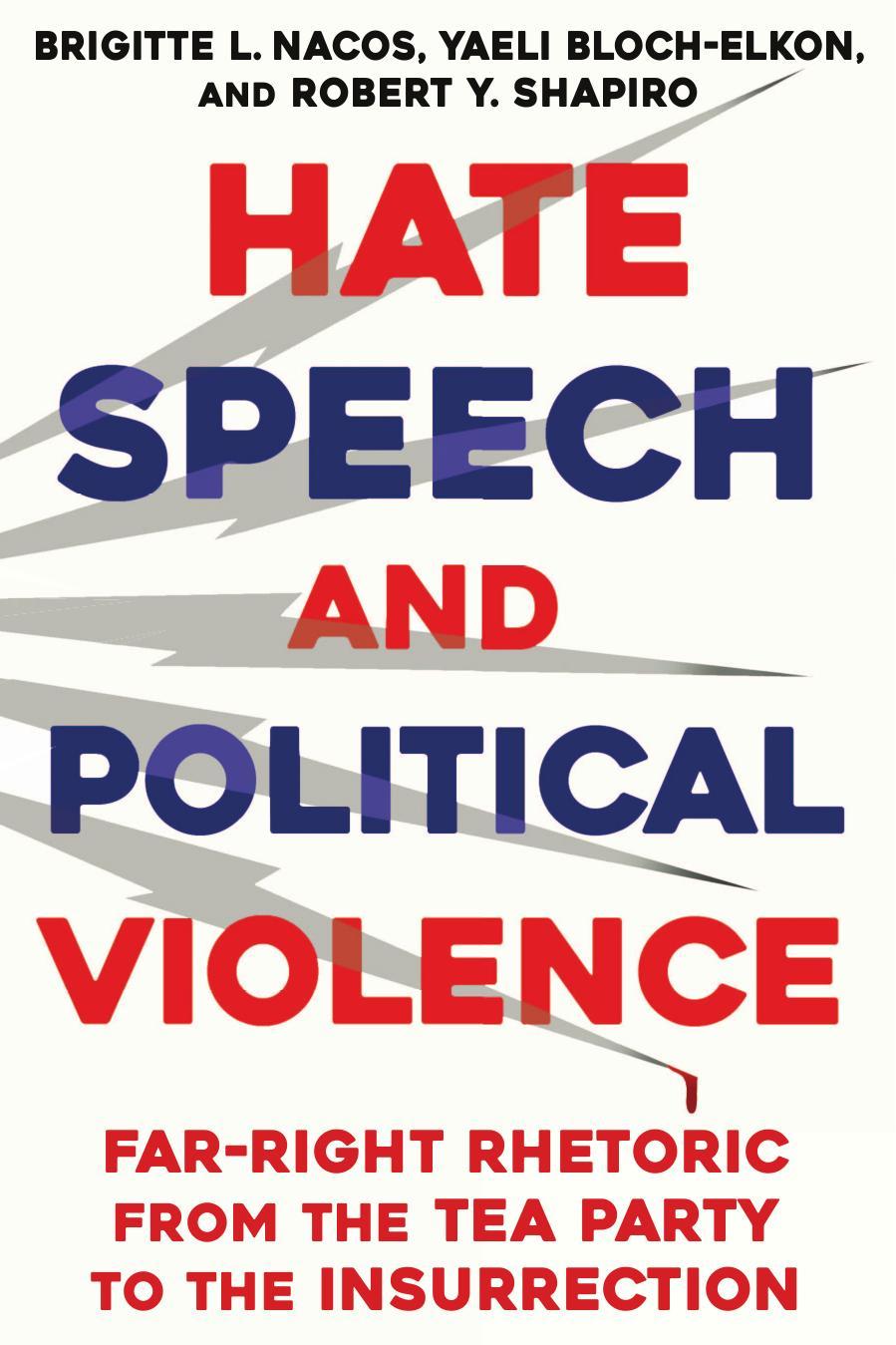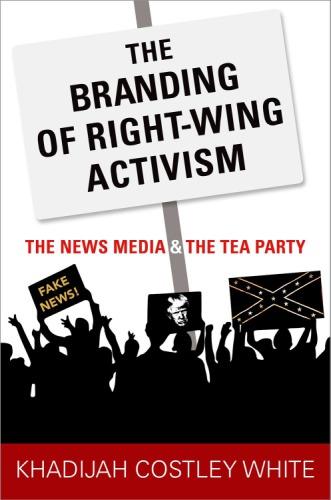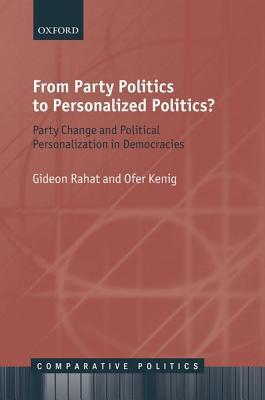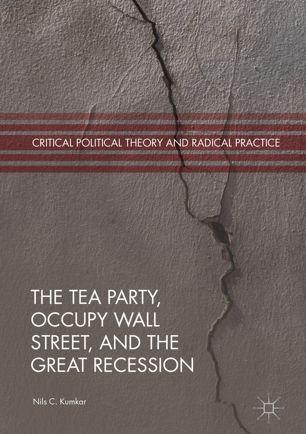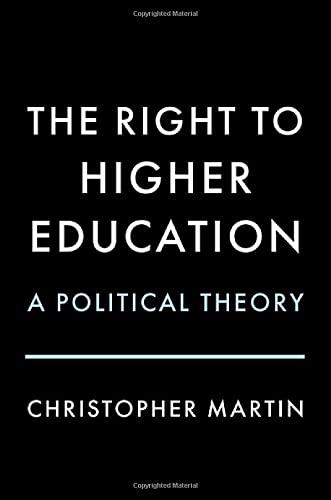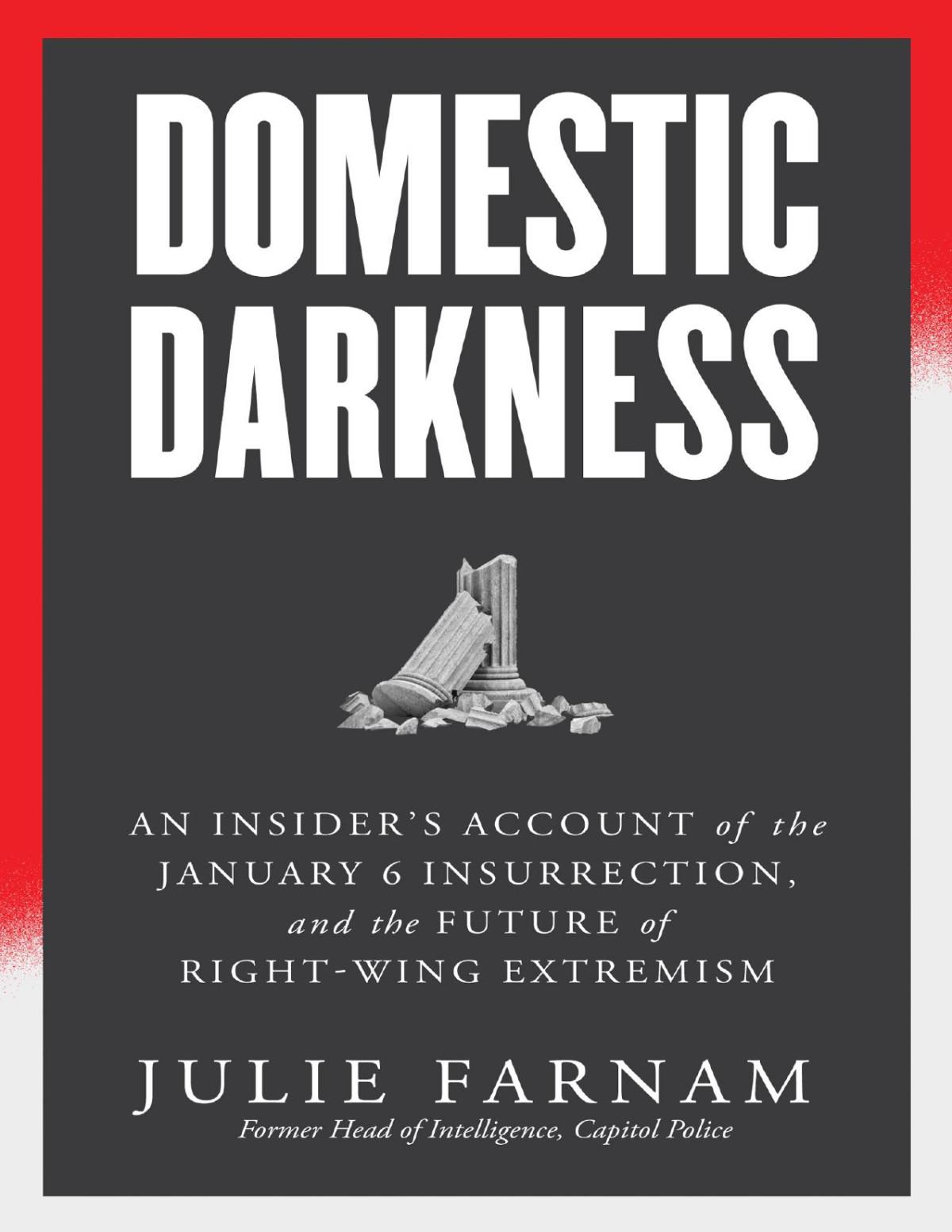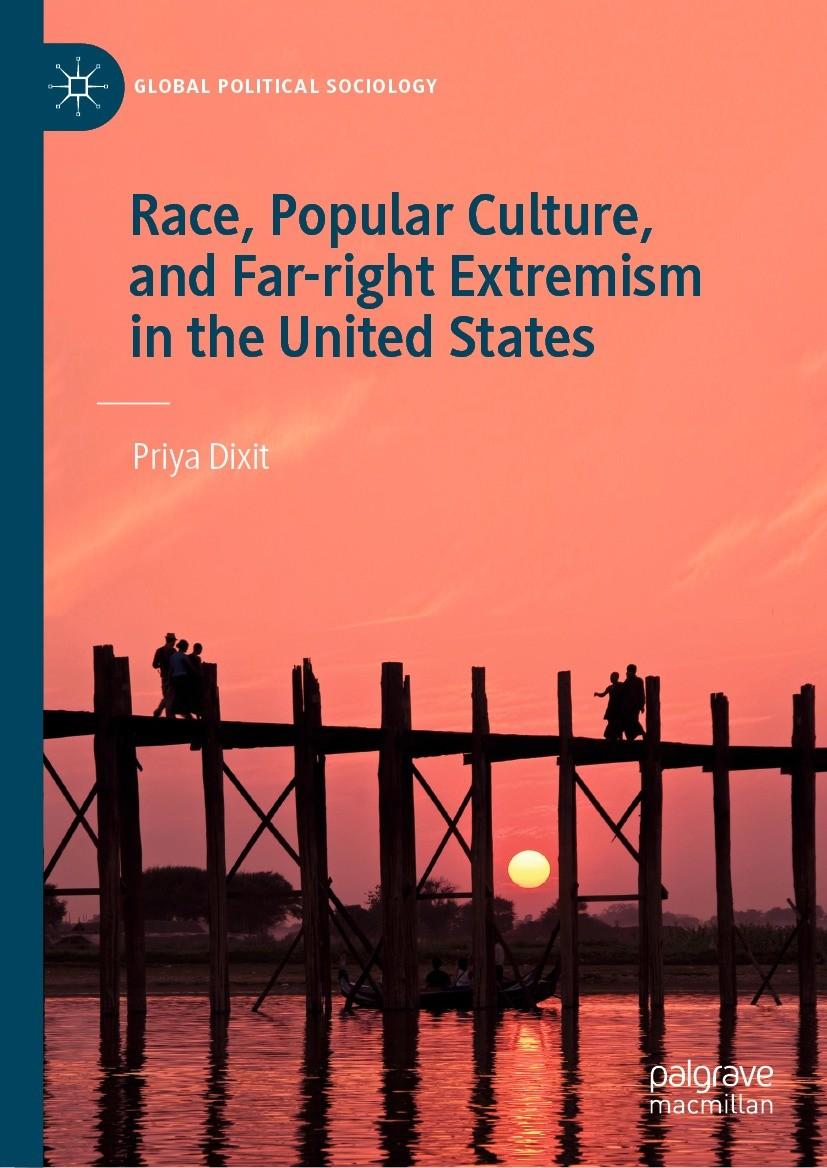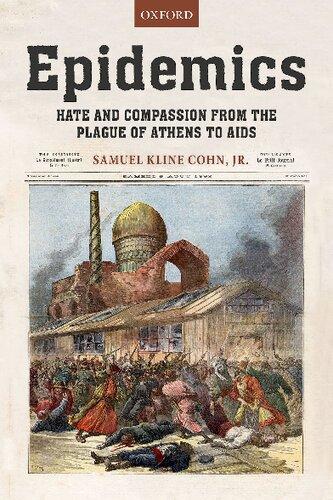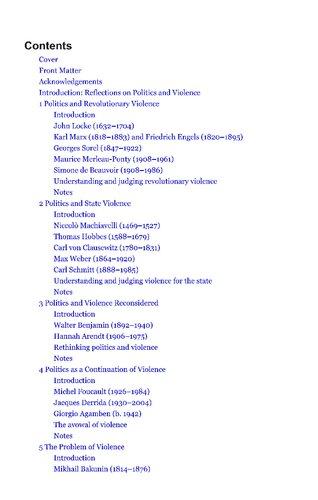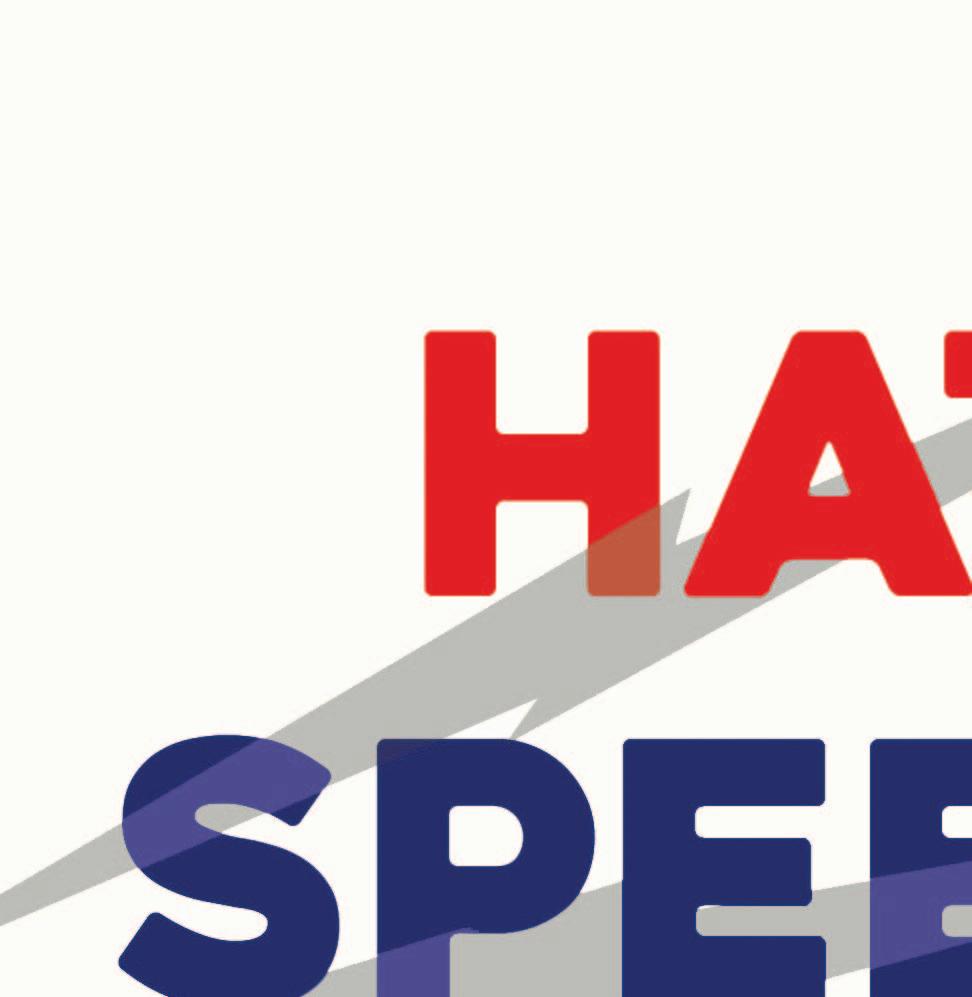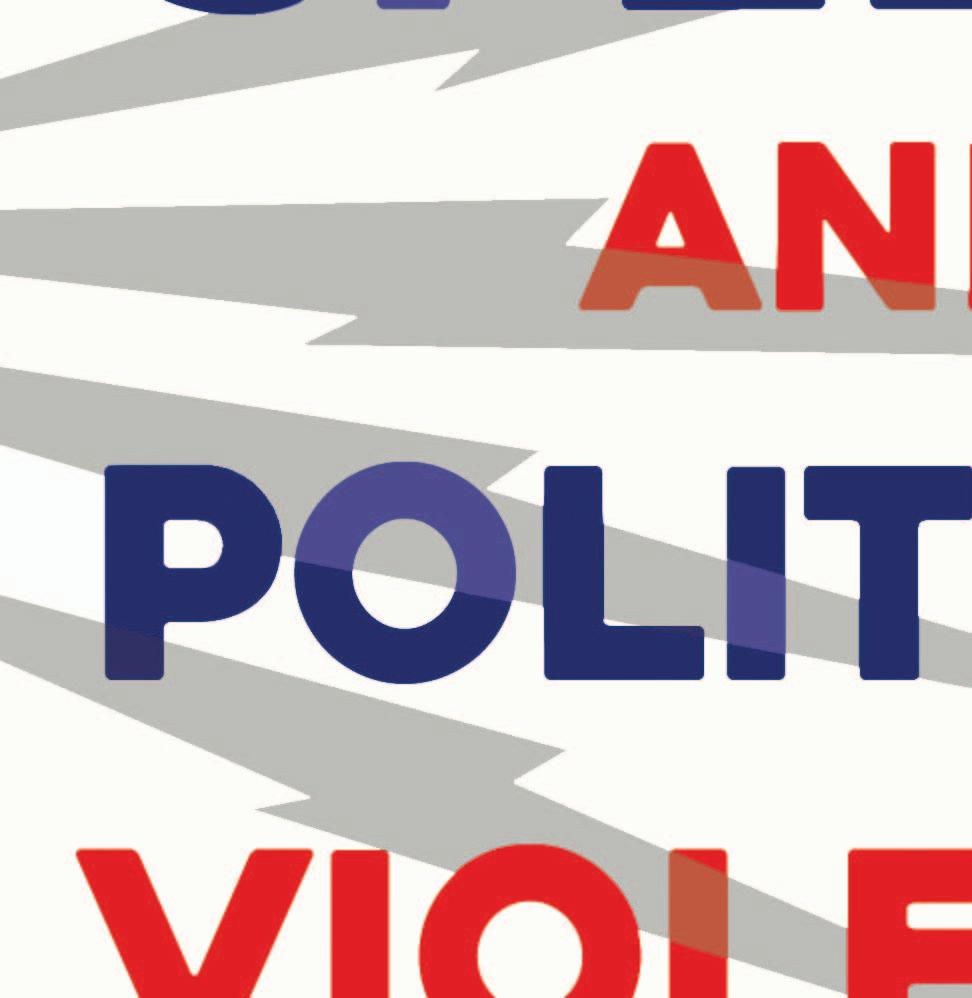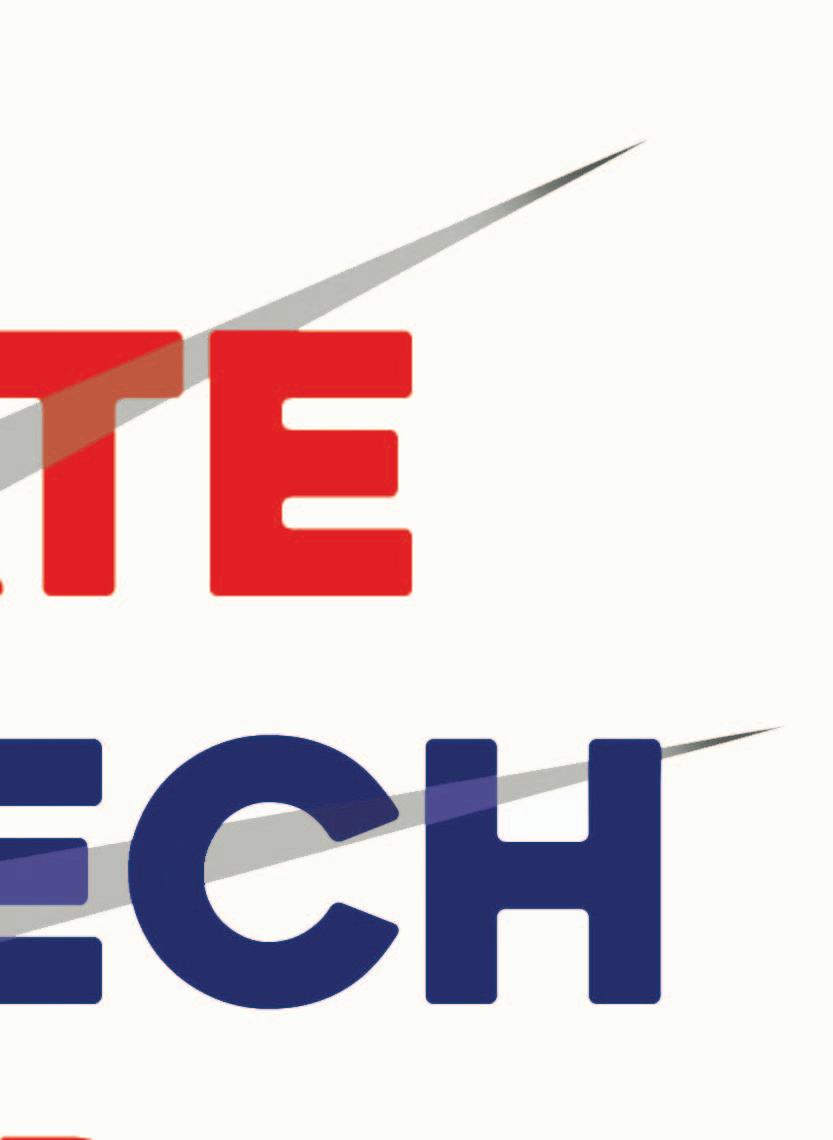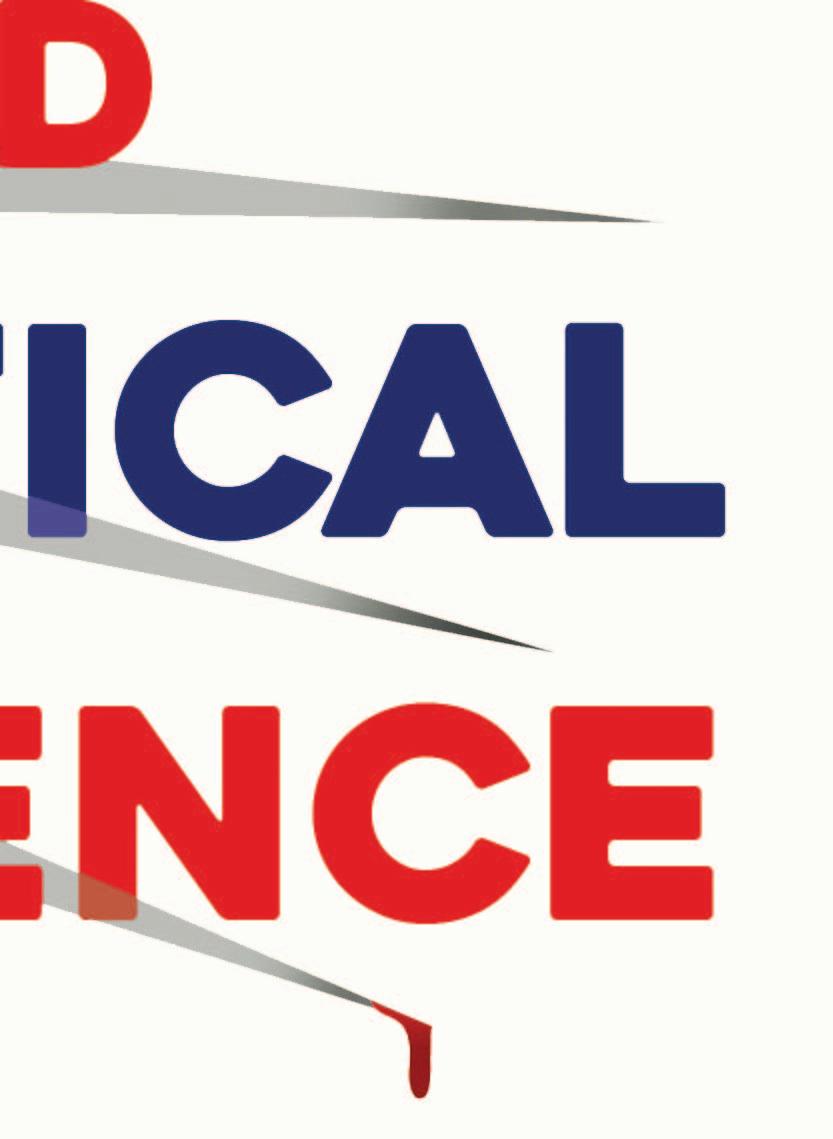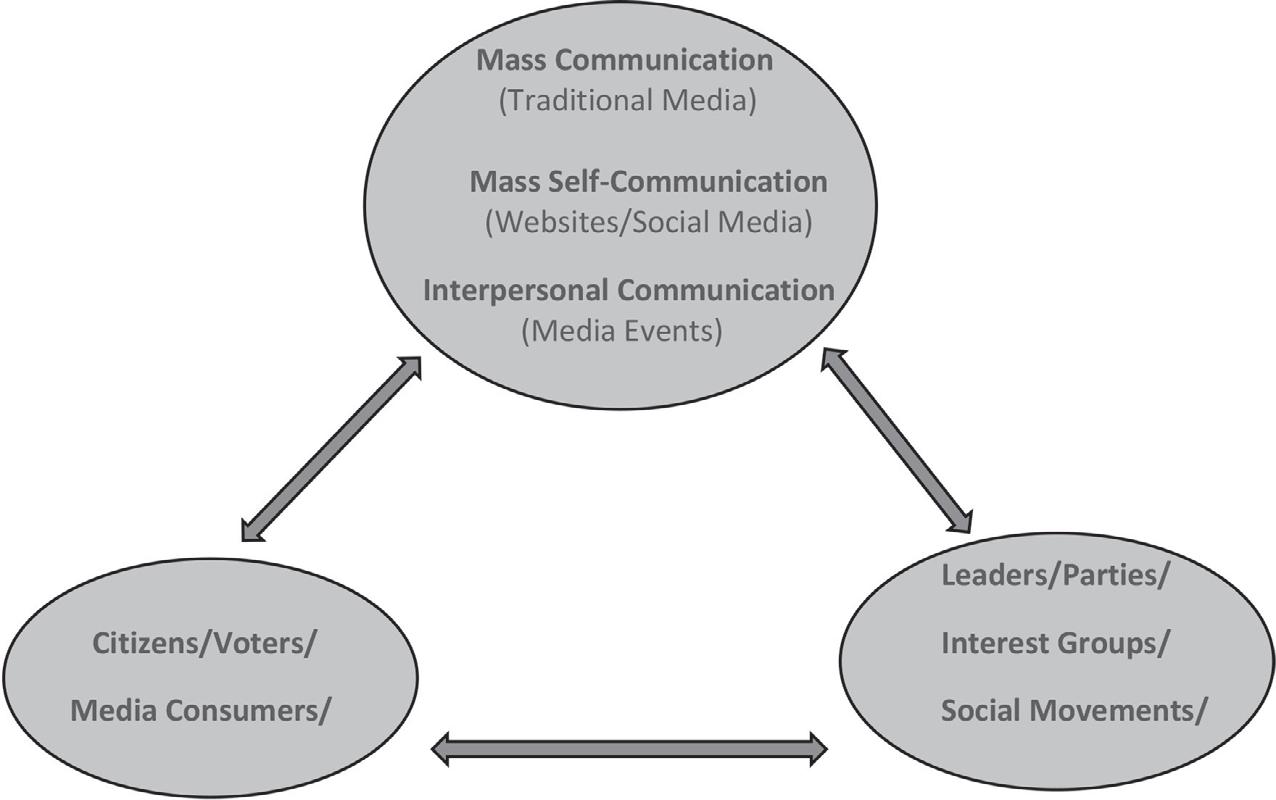HATE SPEECH AND POLITICAL VIOLENCE
Far-Right Rhetoric from the Tea Party to the Insurrection
Columbia University Press / New York
Columbia University Press
Publishers Since 1893
New York Chichester, West Sussex cup.columbia.edu
Copyright © 2024 Columbia University Press
All rights reserved
Library of Congress Cataloging-in-Publication Data
Names: Nacos, Brigitte Lebens, author. | Bloch-Elkon, Yaeli, author. | Shapiro, Robert Y., 1953– author.
Title: Hate speech and political violence : far-right rhetoric from the Tea Party to the insurrection / Brigitte L Nacos, Yaeli Bloch-Elkon, and Robert Y. Shapiro.
Description: New York : Columbia University Press, 2024. | Includes bibliographical references and index.
Identifiers: LCCN 2023028305 | ISBN 9780231214346 (hardback) | ISBN 9780231214353 (trade paperback) | ISBN 9780231560290 (ebook)
Subjects: LCSH: Communication in politics—United States. | Political oratory—United States. | Hate speech—United States. | Tea Party movement. | Political violence—United States. | Conspiracy theories—United States. | Obama, Barack. | Trump, Donald, 1946—Language. | Mass media—Political aspects—United States. | Social media—Political aspects—United States. | United States—Politics and government—2009–2017. | United States—Politics and government—2017–2021.
Classification: LCC JA85.2.U6 N34 2024 | DDC 320.97301/4—dc23/ eng/20230824
LC record available at https://lccn.loc.gov/2023028305
Printed in the United States of America
Cover design: Noah Arlow
Preface vii
1 Introduction: From the Tea Party and Donald Trump’s MAGA Extremism to January 2021 1
2 The Tea Party Movement, the Mass Media, and Contentious Politics 31
3 Online and Offline Media as Super-Spreaders of Anti-Obama Conspiracy Theories 73
4 Donald Trump’s Incendiary Rhetoric and Political Violence 114
5 Partisan Conflict, Issues, and Emotions on High 155
6 Weaponized Words and Deeds Against Democracy 212
Postscript 249
Abbreviations 259 Appendix 261 Notes 271 Index 309
This project began with the goal of examining partisan conflict and the role of the new online as well as traditional offline media in the rise of the Tea Party. We then expanded the research as events unfolded in the rise of Donald Trump and his Make American Great Again (MAGA) movement. Trump had won a great deal of respect and support among Tea Partiers when he made himself the voice of the anti-Obama conspiracy theories. Eventually, in Trump’s own words, the Tea Party movement became Make America Great Again. Further, we recognized early on that the angry and often violent rhetoric of Tea Partiers was similar to Trump’s and the hate speech of his supporters. We thought the results of the 2016 presidential election would put a damper on that rhetoric. We were wrong. Therefore, the book extends the story and our analysis through Trump’s presidency and the 2020 election and its aftermath.
The main argument and general theorizing of the book concerns how communication became weaponized when the Tea Party, a reactionary social movement, quickly appeared and strengthened with the assistance of media insiders, GOP leaders, and conservative advocacy groups just months after Barack Obama, the first Black president of the United States,
entered the White House. We argue that what we call the “interconnectivity of political communication” facilitated and even promoted the Tea Party during its first years along with anti-Obama conspiracy theories that were embraced by its supporters. The rumor that Obama was not born in the United States and therefore an illegitimate president became part of a toxic communication spiral when the reality TV star and entrepreneur Donald Trump made himself the public spokesperson of the “birther” lies. We examine how such weaponized communication—and the partisan conflict of which it was a part—played out in the tumultuous years that followed and ultimately led to the violence of the January 6, 2021, assault on the U.S. Capitol as a move toward overturning Trump’s defeat in the 2020 election. The book provides a chronicle of the increasing level of partisan conflict and weaponized communication from the Tea Party to Trump and the political violence that ensued. As a result, what transpired has put American democracy at risk. As we discuss in the first chapter, other works have examined different aspects of these issues, but we offer a distinctive account that emphasizes the links between the Tea Party and the Trumpian MAGA movement.
This book has taken a while to complete. We owe great thanks to many individuals and institutions. We—especially Shapiro and Nacos—have been supported in many ways by Columbia University’s School of Arts and Sciences, the Graduate School of Arts and Sciences, the Institute for Social and Economic Research and Policy (ISERP), the Department of Political Science, and the School of International and Public Affairs (SIPA). BlochElkon is also grateful to the Bar Ilan University’s Dean’s Office of Social Sciences and the School of Communication.
For comments and very constructive criticism of earlier versions of the manuscript, we thank Lance Bennett, Larry Jacobs, Ben Page, and the anonymous reviewers who helped us improve the book immensely. At Columbia University Press, Stephen Wesley provided terrific support and especially assisted in moving quickly to publication once we completed our revisions. We owe special thanks to Ben Kolstad as our superb project manager and to Lois Smith for excellent copy-editing. We also thank Christian Winting, Marielle Poss, and ARC Indexing.
Many individuals provided direct assistance as well as organizational and logistical support. First, we thank the following former students for their able and important research assistance at various stages of our research and writing: Isaac Horwitz-Hirsch, Min Guo, Sidney Wiswell, Julia Cosgrove, Esterah Brown, Julia Schreder, Sayali Nagwekar, Helena Felsen-Parsons, David Anderson, Yu-Tung Tsai, Kristen Gonzalez, William Parish, Sunpreet Singh, Wilfred Chan, Daran Dooley, Adam Hyams, Tyler Trumbach, Ella Cheng, Emma Cheng, Vivian Tsai, Amber Tong Gao, Dan Louis, Sarah Kuranga, Rekha Kennedy, and Sam Frederick. At the manuscript’s final stage, Eun Ji Sally Son provided capable assistance.
We are also grateful to Kay Achar, Emily Prince, Michael Scott, Holly Martis, Elizabeth Howe, and Eric Vlach at the Department of Political Science; Harpreet Mahajan at SIPA; at ISERP, its directors, Peter Bearman, Thomas DiPrete, Matthew Connelly, Alessandra Casella, and Jo-Ann Rivera; and Loran Morales Kando, Marylena Mantas, and Marianna Palumbo, Shapiro’s collaborators on related work at the Academy of Political Science.
We could not have written this book without the mass media and public opinion data and other evidence available to us and to which we refer in the chapters, figures, and tables. We want to draw special attention to the many public opinion survey sponsors and polling organizations responsible for the extensive data that we have available today. We acknowledge the Roper Center for Public Opinion Research and its iPOLL database, which has been our go-to source for much national public opinion survey data. In particular, we have reported on our analyses of public opinion data from the NORC General Social Survey, the Pew Research Center, the Chicago Council on Global Affairs, and Gallup. We have benefited from communications about these data from colleagues at these respective organizations: Tom Smith, Rene Bautiste, Claudia Deane, Dina Smeltz, and Frank Newport.
Our greatest and warmest thanks go to our families, with whom we endured living and working during the COVID-19 pandemic.
Brigitte is most thankful for the support, feedback, and encouragement of her late husband, Jimmy, during the early years of our project. Today, he
would share our concerns about the increase in partisan hostility, hate speech, and domestic political violence that threaten America’s democracy he hoped our children and grandchildren would inherit.
Bob thanks his wife, Nancy Rubenstein, whom he once again gives credit for contributing to our debate about the title of the book (she came up with the title of our first book). She also, with good cheer and for too many months, left him alone at the computer and with his stacks of books and papers.
Yaeli is most grateful to her daughters, Liya and Neta Elkon, who were continuously supportive and understanding of their mother’s involvement in this project, as they left their childhood behind and have been growing into beautiful young adults. Most important, along the way, they have learned a lot about precious democratic values and threats to democracy.
We owe our families big time. They helped make the book all the better for us, along with the others whom we have been so pleased to acknowledge. As always, full responsibility for all the deficiencies and shortcomings of our work, which now includes this book, is ours alone.
HATE SPEECH AND POLITICAL VIOLENCE
INTRODUCTION
From the Tea Party and Donald Trump’s
MAGA Extremism to January 2021
Meteorologists predicted nothing unusual for Wednesday, January 6, 2021, in the Washington, DC, area. But apart from normal winter temperatures, there was nothing normal about that day. The “Save America” rally at the Ellipse near the White House, organized by activists in the Make America Great Again (MAGA) movement created by Republican president Donald Trump, turned into a breach of the U.S. Capitol and a violent attempt to prevent the certification of Joe Biden’s election victory by members of Congress and Vice President Mike Pence. Republican senator Mitt Romney characterized the event as “an insurrection incited by the President of the United States.”1 Indeed, in the weeks before the attack, President Trump claimed falsely that he had won reelection in a landslide. He used his Twitter account, @realDonaldTrump, and public appearances multiple times to urge supporters to “Stop the Steal” of the election by the Democrats. For example, on December 19 he tweeted, “Statistically impossible to have lost the 2020 Election. Big protest in D.C. on January 6th. Be there, will be wild.” On January 1, he used his Twitter account to mobilize his followers: “The BIG Protest Rally in Washington, D.C., will take place at 11:00 A.M. on January 6th. Locational details to follow. StopTheSteal!”
During a January 4 rally in Georgia ahead of two special elections for the U.S. Senate, Trump grandstanded: “If the liberal Democrats take the Senate and the White House—and they’re not taking this White House—we’re going to fight like hell, I’ll tell you right now . . . We’re going to take it back.”2
At the January 6 rally, Trump began his seventy-three-minute speech with an attack on the mainstream media and Big Tech (the largest and dominant technology companies and their involvement in mass and targeted communication)—although both reported on or carried his propaganda day in and day out before and after he became president. He shouted, “We have hundreds of thousands of people here and I just want them to be recognized by the fake news media. Turn your cameras please and show what’s really happening out here because these people are not going to take it any longer. It would be really great if we could be covered fairly by the media. The media is the biggest problem we have as far as I’m concerned, single biggest problem. The fake news and the Big Tech.” A few minutes later, Trump piled on, “We don’t have a free and fair press. Our media is not free, it’s not fair. It suppresses thought, it suppresses speech and it’s become the enemy of the people. It’s become the enemy of the people.”3
Trump repeated his tale of a huge election victory twice during this speech. “We won in a landslide. This was a landslide,” he claimed. Getting to the very reason for this rally, he urged the crowd to act: “Now, it is up to Congress to confront this egregious assault on our democracy. And after this, we’re going to walk down, and I’ll be there with you, we’re going to walk down, we’re going to walk down. . . . Because you’ll never take back our country with weakness. You have to show strength and you have to be strong. We have come to demand that Congress do the right thing and only count the electors who have been lawfully slated, lawfully slated.”4
During his candidacy and presidency, Trump’s relentless salvos of weaponized communication became the dominant feature of his political rhetoric.5 The term “weaponized rhetoric, speech, or communication” is used here in reference to the content of spoken and written messages conveyed at public events or through various media with the goal of demonizing political opponents and societal “out-groups.” Trump’s populist vernacular of hate and division grew even sharper after he lost the November 2020
presidential election. On January 6, his language whipped the already combative crowd into a fury. Obviously perceiving their leader’s attack speech as a call to arms, his supporters—among them well-organized and well-trained white supremacist, neo-Nazi, and antigovernment groups— invaded congressional buildings hunting for the “enemies” of the president and his supporters. Contrary to his promise, Trump did not join the crowd that moved furiously toward the Capitol. Instead, he watched the live TV coverage of the attack from the White House without making any effort to stop the rampage. He enjoyed watching his devoted supporters in MAGA hats who carried Trump banners and Confederate flags, used the poles of U.S. flags as weapons against Capitol police officers, and shouted “Hang Mike Pence.”6 Later, when Capitol and Metropolitan police, with the assistance of National Guard units, had secured congressional buildings, President Trump tweeted, “These are the things and events that happen when a sacred landslide election victory is so unceremoniously & viciously stripped away from great patriots who have been badly & unfairly treated for so long. Go home with love & in peace. Remember this day forever!”
Like supporters of the Tea Party movement a decade earlier, Trump and his most fervent followers launched their weaponized speech against anyone who was not loyal to the MAGA movement’s leader. They did this regularly and in plain view. Nonfactual statements and foolish conspiracy theories were no longer spread merely among fringe groups but became part of mainstream politics. Trump’s tweets about “rigged” election results and his declaration of love for “great patriots” who had maimed police officers and threatened the lives of vice President Pence, Speaker of the House Nancy Pelosi, and others were shocking displays of the most horrific consequence of his and his supporters’ dangerous propaganda. As Timothy Snyder warned, “To abandon facts is to abandon freedom.”7
How did the United States of America, the oldest continuous democracy, arrive at such a dangerous junction? Years of rising partisan conflict, the mass media’s amplification of the Tea Party movement, and their embrace of anti-Obama conspiracy theories were crucial building blocks in the rise of Donald Trump. In 2019, President Trump told an interviewer, “The Tea Party was a very important event in the history of our country.
And those people are still there. They haven’t changed their views. The Tea Party still exists—except now it is called Make America Great Again.”8 Trump was well aware that Tea Partiers along with Protestant evangelicals, many of whom were sympathizers of the Tea Party movement, composed the core of his political base from the moment he became the most prominent public advocate of the racism-driven anti-Obama birther conspiracy theory. The importance of the Tea Party in Trump’s political scheme was crystal clear when he announced his run for the presidency with a laundry list of grievances and promises that mirrored the Tea Party’s racist and nativist agenda.9 Most important, as Trump became the leader of what was, in effect, a merging of the Tea Party and Make America Great Again (MAGA) movements, his aggressive rhetoric and outright hate speech helped to increase the existing political divisions to the level of hyperpolarization.
PERSPECTIVES ON THE TEA PARTY, ANTI-OBAMA CONSPIRACY THEORIES, AND THE RISE OF TRUMP
A multitude of books and articles have been published about one or another aspect of the Tea Party movement, the rise of Donald Trump, partisan conflict, and the role of the mass media and social media. The first scholarly books devoted to the Tea Party were authored by the historian Jill Lepore, the law professor Elizabeth Price Foley, and the political scientists Theda Skocpol and Vanessa Williamson. All three volumes contribute to our understanding of the formative period of the Tea Party. In a fascinating account, Lepore compares the modern Tea Party and its obsession with the American Revolution, the Constitution, and originalism to the 1770s and 1780s, concluding that the Tea Party’s “originalism has slipped into fundamentalism.”10 Conversely, Foley praises the Tea Party’s principles of limited government, U.S. sovereignty, and constitutional originalism.11 Skocpol and Williamson offer a balanced and comprehensive analysis of the early
Tea Party’s organizations, ideologies, and rank-and-file members; its early effects on the Republican Party; and its ability to get significant amounts of news coverage. Notably, these two authors recognize that in the earliest stage of the Tea Party the movement’s activists were “right-wingers in the GOP orbit,” including antigovernment extremists, among them militia groups such as the Oath Keepers, who would years later play a central role in the storming of the U.S. Capitol.12 Parker and Barreto interpreted the Tea Party movement’s early embrace and spreading of anti-Obama conspiracy theories as signs of their white members’ fears about changes in their country that they perceived to be harmful to them.13
There is a rich literature describing one or another aspect of Tea Party propaganda, online sites, and communities; the role of cable networks; the mainstream media’s news coverage; and the danger of weaponized communication at the disposal of strongmen leaders.14
There is also important, scholarly research that has considered social movements and contentious politics in the context of changes that have come with twenty-first-century information and communication technology. Before the breakthrough of social media as major communication vehicles, Yochai Benkler in his pioneering book, The Wealth of Networks, recognized, analyzed, and applied the transformation from an “industrial information economy” to a “networked information economy” that has allowed “cooperative and coordinated action carried out through a radically distributed, non-market mechanism that does not depend on proprietary strategies.”15 With the breakthrough of social media, however, Benkler, Robert Faris, and Hal Roberts show, in a further pioneering way, that these media did not dominate political communication. Rather, a strong onesided (“asymmetric”) communication sphere—“network propaganda”—on the political right emerged that substantially included existing media along with social media.16 Social media—and its pathologies—was hardly the only influence on political discourse and was not the dominant force in the early 2020s.17 Lance Bennett and Steven Livingston emphasize aptly that this new oppositional partisan sphere disrupted basic principles and institutions of American democracy.18 A number of scholars researched and developed theoretical frameworks for the different ways in which
contentious collective politics and social movements, including the Tea Party, used the new information and communication landscape.19
Other works deal exclusively or partially with Tea Partiers’ and Donald Trump’s obsession with anti-Obama conspiracy theories, the Tea Party’s capturing of the Republican Party in the House of Representatives, Tea Partiers’ (and evangelicals’) crucial role in Trump’s 2016 election victory, and Trump’s political language.20 While focusing on the 2020 presidential election, John Sides, Chris Tausanovitch, and Lynn Vavreck, for example, present and interpret valuable public opinion survey data on the increased political polarization that started well before Trump’s entry into the electoral arena.21 The partisan conflict at the level of political leaders that penetrated into the level of the mass public has been well documented—and it has continued and is important to emphasize further and more fully (see chapter 5).
A THEORY OF THE MASS-MEDIATED RISE OF THE TEA PARTY AND ANTI-OBAMA CONSPIRACY THEORIES
The main argument of Hate Speech and Political Violence is that political communication began to go into a toxic downward spiral when the Tea Party, a reactionary social movement, was hastily founded with the assistance of media insiders and conservative advocacy groups merely a month after Barack Obama, the first Black president of the United States, was inaugurated. We argue and support with our research what we call the interconnectivity of political communication that facilitated and even promoted the Tea Party during its formative first years and the anti-Obama conspiracy theories that were embraced by its supporters. The rumor that Obama was not born in the United States and therefore an illegitimate president became part of the toxic communication spiral when the reality TV star and entrepreneur Donald Trump made himself the public spokesperson of the “birther” lies.
As figure 1.1 shows, the traditional mass media and the new social media platforms and websites along with the perennial personal communications are vehicles for the transmission of political messages to and from
FIGURE 1.1 The interconnectivity of political communication and the rise of the Tea Party and anti-Obama conspiracy theories.
organized political entities and leaders (right corner) and citizens and voters (left corner).
The communicators in all three communication modes are participants in the political communication loop. What Manuel Castells calls mass communication and mass self-communication media were crucial contributors to and disseminators of uncivil and even weaponized rhetoric during the rise of the Tea Party.22 But a great many of these toxic messages originated in interpersonal communication on websites and in the form of media events that remain part and parcel of modern-day politics and that tend to be staged in search of news and social media attention. Originally analyzed by Daniel Dayan and Elihu Katz, extraordinary media events, such as the public funerals of political leaders or the Olympic Games, required close organizational cooperation between governments and media organizations.23 In the early stage of the Tea Party, the movement’s activists organized mass protest rallies, often with the assistance and participation of Fox News’s
political talk show hosts, who highlighted the anti-Obama and antiWashington outrage of its rank-and-file members and supporters. In this case, then, all three corners of the communication triangle were involved: mass media insiders and movement activists organized media events that attracted part of the general public—especially voters. These massmediated protests and the whole Tea Party movement were, according to Parker and Barreto, mostly organized against cultural, demographic, and political changes that Tea Partiers could not believe in.24 Noting that contemporary “politics is primarily media politics,” Castells characterizes the media environment as “the space of power making.”25 Similarly, as Khadijah Costley White put it, the news media are “not just a conduit through which political messages are conveyed to an awaiting audience, but a site in which political struggles, identities, activism, and rhetoric actually play out between media actors.”26
In other words, the three communication modes shown at the top of figure 1.1 and separately in figure 1.2 are the pivotal parts of the interconnected political communication loop that we have described. The three communication types are not completely isolated entities; they are involved in symbiotic relationships in that they report, highlight, ignore, applaud, or condemn one another’s messages. Our research shows how Tea Partiers and anti-Obama conspiracy theorists exploited the offline and online mass media and paved the way for Donald Trump’s unorthodox candidacy and
FIGURE 1.2 The three modes of political communication.
presidency. Moreover, different partisan and ideological group members got their news then (and afterward) from an array of different online and offline information sources. The result was an insurmountable information and opinion gap between reactionaries to the right and progressives to the left of the ideological spectrum. For example, in December 2010, a few weeks after four dozen Tea Party–supported, first-time GOP congressional candidates won in the midterm elections, 52 percent of self-identified Republicans but only 9 percent of Democrats identified Fox News as their major information source. Conversely, whereas 22 percent of self-described Democrats named CNN as their primary news source, only 7 percent of Republicans did.27 A decade later, the partisan gap had clearly endured: in mid-2020, 32 percent of Republican respondents named Fox News as their major information source, but only 2 percent of Democrats did. At the same time, 12 percent of Democrats preferred CNN as their primary news source, but only 2 percent of Republicans did.28
Our second argument is that the uncivil language of Tea Party radicals and anti-Obama conspiracy theorists was taken to an even greater extreme when Donald Trump entered the political arena. Bryan T. Gervais and Irwin L. Morris found similarities in the often incendiary rhetoric of congressional Tea Party members and Donald Trump. Incivility characterized much of the online speech of Tea Party supporters and anti-Obama conspiracy theorists.29 Jennifer Mercieca characterized Trumpian rhetoric as an illustration of weaponized communication used by dangerous demagogues and pointed out that Trump “frequently explained his aggressive rhetoric by calling himself a ‘counterpuncher,’ but it often seemed he was the first to land a rhetorical punch.”30 This was certainly the case in the weeks before, on the day of, and in the weeks after January 6, 2021. Speaking of his own experience on that infamous day, then vice president Mike Pence, the major target of the angry crowd, told the ABC News anchor David Muir that Trump’s words and especially a tweet from the president as the attack on congressional buildings unfolded were “reckless” and “endangered me and my family and everyone at the Capitol.”31 Obviously, Pence saw a causal relationship between Trump’s rhetoric and the violent actions of his supporters.
We examine the rhetorical style and content of Donald Trump’s tweets, speeches, and public statements and explore the groups and individuals who were most often targeted by his weaponized words. We also discuss the documented rise of lethal far-right violent extremism, including threats against members of Congress and other public officials during Trump’s presidency (and thereafter), which suggest a relationship between violent speech and actual violence.
Last but not least, we use public opinion data to demonstrate how the reactionary agenda, inflammatory rhetoric, and political violence of the Tea Party/Trump era expanded the earlier partisan and demographic divisions in the United States into a hyperpolarized conflict and a threat to democracy. Forwarding past the conflict over the 2020 presidential election, while the major Trump-endorsed Republican candidates for the U.S. Senate (as well as other offices) lost their races in the 2022 midterm elections, the reactionary MAGA wing in the House’s Republican majority caucus became more numerous and more influential in the party’s thin majority. Moreover, Trump’s early entry into the 2024 presidential race was a signal that he was in no mood to retire from politics.
WHEN POLITICAL OPPONENTS ARE SEEN AS ENEMIES
On the evening of January 6, a congressional majority and Vice President Pence certified Joseph Biden’s presidential election victory—without the votes of six Republicans in the Senate and 121 in the House of Representatives. After the House impeached President Trump for his role in the failed insurrection, Republicans in the Senate prevented a guilty verdict in the impeachment trial. Republicans also opposed the formation of the House Select Committee to Investigate the January 6th Attack on the United States Capitol along the lines of the body that investigated the terrorist attacks of September 11, 2001. With the exception of two Republicans who had voted for Trump’s impeachment, all the other
members of the House Select Committee on January 6th were Democrats. The political and ideological polarization that had gradually widened for decades had now arrived at a trying crossroads during Trump’s presidency.32 Democrats and liberals on the one side and Republicans and far-right conservatives on the other side differed not simply on the pros and cons of particular policies but also on what was reality, truth, and fact. This division became even sharper after the January 6 nightmare. Democrats considered the efforts by President Trump and his supporters to keep him in office a serious assault on the very essence of democracy: the peaceful transfer of power after free and fair elections. Republicans downplayed the gravity of the incident or characterized the violent intruders falsely as tourists or members of the far-left Antifa movement. There was also a new twist in far-right conspiracy theories about the alleged enemy within that was working against MAGA patriots and their savior, Donald Trump: the hugely popular QAnon conspiracy theory claimed that “deep state” actors, among them FBI officials and other treacherous figures within the executive branch of government, had staged the attack of January 6 in order to smear the sitting president. In reality, the QAnon crowd was directly involved in the events of January 6. As the terrorism scholars Sophia Moskalenko and Clark McCauley found, “QAnon internet forums encourage followers to ‘do the research’ and ‘connect the dots’—in other words, to function as collective myth-making platforms. It is on these platforms that QAnon discussed and planned ‘the Storm’ of January 6, designed to regain the ‘stolen’ presidency for Donald Trump.”33
Calling nonsensical beliefs within the Trump movement “conspiracy theories without theory” and labeling them “conspiracism,” Nancy Rosenblum and Russell Muirhead warned well before the insurrection attempt that “the conspiracists’ assault on common sense produces disorientation. It creates a deep polarization about what it means to know something—a divide more unbridgeable than partisan polarization, for it becomes impossible to persuade, compromise, and even to disagree.”34 Early in the third decade of the twenty-first century, the political, social, and cultural rifts in the United States transcended the usual disagreements about policy preferences. Instead, millions of Trump Republicans considered Democrats as
an existential threat to their image of America’s democratic republic, and many were ready to fight for its survival. Similarly, millions of moderate and progressive Democrats and Independents considered many of Trump’s fellow Republican leaders and followers as reactionaries and existential threats to liberal democracy.
However, neither the Tea Party nor the Trump movement or related conspiracy theories appeared out of the blue on the political stage. Both had deep roots in the steady rise of the so-called New Right within the predominantly white Republican Party that was in large part driven by fear and resentment of the Civil Rights and Voting Rights Acts in the 1960s and the emergence of militant Black groups during the same decade. Goldwater’s New Right was determined to defend white supremacy. After all, “the hierarchy of caste . . . is about power—which groups have it and which do not. It is about resources—which caste is seen as worthy of them and which are not. It is about respect, authority, and assumptions of competence—who is accorded these and who is not.”35 Nathan Glazer and Daniel Patrick Moynihan wrote in the early 1960s that “religion and race define the next stage in the evolution of the American people.”36 Their prediction proved prophetic, especially at the beginning of the 2020s.
While there had been moderate and conservative factions in the GOP, the 1964 presidential campaign of Senator Barry Goldwater was a watershed in that “he and his supporters set the tone for the conservative movement ever after by mobilizing a base of right-wing populists, refusing to compromise with moderates, and pursuing a southern strategy (which Richard Nixon later took up further) aiming at attracting civil rights opponents to the GOP.”37 That strategy enabled him to win five southern states in defeat and opened that regional door further for Republicans going forward. From that time on, there were several major threads in the New Right’s radicalism, most of all (1) the resentment and militant opposition toward actual or imagined changes in the traditional order of white Christian dominance; (2) the dissemination of conspiracy theories to pinpoint the enemies of the people at home and abroad; and (3) the attacks on the press that were seen as part of the evil cabal against patriotic Americans united in the New Right.
TAKING BACK OUR COUNTRY
Goldwater Republicans believed that “America has been largely taken away from them and their kind” and were “determined to try to repossess it and to prevent the final destructive act of subversion.”38 Goldwater lost to President Lyndon Johnson, but the New Right became energized by the defeat and began to fight relentlessly against progressive changes. Ronald Reagan’s support from the New Right in 1980 had its roots in his strong backing of Goldwater in the 1964 campaign. Reagan used dog whistles such as “welfare queens,” “forced busing,” and “law and order” to appease both the New Right’s ideologists and the moderates within the GOP. Notably, James Baker III, White House chief of staff in President Reagan’s first term, recognized a close link between Reagan and the Tea Party. He told an interviewer, “People ask me what I think Ronald Reagan would think of the Tea Party. And I think he would be very, very comfortable with the Tea Party. I said, in fact, that I think he might be leading it. He was very, you know, he was seen to be somewhat revolutionary in his day.”39 President George H. W. Bush did not follow his predecessor’s example of placating both factions within his party but showed his distaste for the New Right. In the 1992 primaries, he was challenged by Patrick Buchanan, who was not successful but had a strong showing in New Hampshire, which ensured the New Right’s great influence at the GOP’s national convention in Houston. There, in his so-called culture war speech, Buchanan laid out the New Right’s clarion call for post–Cold War America: “My friends, this election is about more than who gets what. It is about who we are. It is about what we believe, and what we stand for as Americans. There is a religious war going on in this country. It is a cultural war, as critical to the kind of nation we shall be as was the Cold War itself, for this war is for the soul of America. . . . My friends, we must take back our cities, and take back our culture, and take back our country.”40
Later, a Republican congressman from Georgia, Newt Gingrich, was ready for what he called the fight for “renewing American civilization” and to “put the GOP into a total war footing” against Democrats.”41 He was
the engineer of his party’s landslide victory in the 1994 midterm elections, when a new, antiestablishment class of “deep-dyed conservatives,” mostly from the South, became members of both congressional chambers.42 Gingrich taught them about the importance of attack language with use of words such as traitors and radicals. 43 He “pioneered a style of partisan combat . . . that poisoned America’s political culture and plunged Washington into permanent dysfunction.”44 Halfway through Trump’s presidency, Gingrich talked about “four great political ‘waves’ in the past half century . . . : Goldwater, Reagan, Gingrich, then Trump,”45 without mentioning the equally influential New Right culture warrior, Patrick Buchanan. This perennial New Right battle cry of “taking our country back” from enemies within and outside was fueled by massive doses of oxygen during the rise of the Tea Party, its takeover of the congressional caucus in the U.S. House of Representatives, and, even more so, during the candidacy and presidency of Donald Trump.
CONSPIRACY THEORIES ABOUT EVIL ENEMIES
From his time as the self-appointed spokesman for the anti-Obama “birther” theory to his retweets of deranged QAnon messages from the White House, Donald Trump was the conspiracist in chief. Trump’s longtime ally, the former New Jersey governor Chris Christie, wrote in his 2021 book, “Donald Trump was by far the most effective proponent of the birther conspiracy. He truly showed everyone how a lie like that can be exploited.”46 But just as House members and senators and politicians across the country became birther conspiracy theorists, many highly placed GOP elected and appointed officials signed on to the bizarre QAnon web of political lies.
During the Cold War, communists at home and abroad were the villains in Republican conservatives’ conspiracy theories. As Senator Joseph McCarthy claimed in his opening salvo against traitors in 1950, “Today we are engaged in a final, all-out battle between communistic atheism and
Christianity. The modern champions of communism have selected this as the time, and ladies and gentlemen, the chips are down—they are truly down. . . . The reason why we find ourselves in a position of impotency is not because our only powerful potential enemy has sent men to invade our shores . . . but rather because of the traitorous actions of those who have been treated so well by this Nation.”47 Like McCarthy a decade earlier, Goldwater and his supporters believed in the same conspiracy theory; namely, that “the top government officialdom” was “infiltrated by Communists” engaged in harming the country’s national interest.”48
Adapting John Winthrop’s mystical image of America as “a city on a hill,” Ronald Reagan used it in the 1960s as a rallying cry “against rebellious students at home and Communist aggression abroad.”49 In the 1980s, the “shining city” as beacon of freedom became the core of President Ronald Reagan’s conspiracy theory about an existential communist threat against America and the free world, “run from the heart of an ‘evil empire.’ ”50 This conviction influenced his foreign policy, including the “Contra” part of the secret Iran-Contra dealings that eventually was exposed as a major scandal. In the Iran-Contra affair, the Reagan administration engaged in the illegal funding of the right-wing Contras again the communist-backed Nicaraguan government via funds it raised by the secret sale through Israel of arms to Iran.
During Barack Obama’s initial term in office, Patrick Buchanan was precise in pinpointing those from whom he thought white Christian Americans must take the country back when he wrote: “Our intellectual, cultural, and political elites are today engaged in one of the most audacious experiments in history. They are trying to transform a Western Christian republic into an egalitarian democracy made up of all the tribes, races, creeds, and cultures of planet Earth. They have dethroned our God, purged our cradle faith from public life, and repudiated the Judeo-Christian moral code by which previous generations sought to live.”51
These complaints resembled the grievances expressed later in the “Great Replacement” conspiracy theory within alt-right and white supremacist/ neo-Nazi groups that led to political violence: for example, to a death and multiple injuries at the “Unite the Right” rally in Charlottesville,
Virginia, in the summer of 2017; the mass shooting in a supermarket in El Paso, Texas, in 2019; and the attack outside and inside the U.S. Capitol on January 6, 2021. In no case did President Trump criticize the violent extremist elements responsible for this political violence. The Great Replacement threat was once more the direct and admitted motivation for the killing of ten Black people in the May 2022 mass shooting at a grocery store in Buffalo, New York.
THE PRESS AS VILLAIN
When President Trump chastised the media as “the enemy of the people” during the January 6 rally, it was the refrain of many such past attacks on news organizations and individual journalists during his public appearances and in his tweets. Earlier Republican presidents, too, were convinced that the most influential news media organizations were supportive of Democrats and liberals—no other president more so than Richard Nixon. While publicly not as combative in his attacks on the press as Donald Trump, Nixon was the only U.S. president besides Trump who considered the media to be an “enemy.” Nixon entered the White House considering himself a victim of press bias in the past. He blamed news organizations for his loss in 1960 to John F. Kennedy, whom he claimed was their favorite candidate. After losing the 1962 gubernatorial race in California against the incumbent Democrat, Pat Brown, he told the press, “I leave you gentlemen now, and you will write it. You will interpret. That’s your right. But as I leave you, I want you to know—just think how much you’re going to be missing. You won’t have Nixon to kick around anymore, because gentlemen, this is my last press conference.”52
That was not his last press conference. Six years later, he ran again for president and defeated Lyndon Johnson’s vice president, Hubert Humphrey. After Nixon won the presidency in 1968, the “battle lines had been drawn as they had not been in any previous administration.”53 Nixon’s battle with the press was marked by a permanent offensive in the belief that attacking
the media would increase his public approval in the midst of the faltering Vietnam War and the antiwar protests at home. His number one attacker was his vice president, Spiro Agnew, who drew on White House bullet points in his regular attacks against the media—an enemy elite—which he allegedly fought in the name of “the silent majority” of good Americans. The following points were used by Agnew and other White House officials as ammunition against enemies in the press:
“A small little group of men who . . . enjoy a right of instant rebuttal to every presidential [speech]”
A tiny small and unelected elite
Subversive people who lived and worked in the suspect areas of New York and Washington and “read the same newspapers” and draw their political and social views from the same source
A fraternity whose views do not represent the views of America
Sinister people whom the average, honest, God-fearing American knew “practically nothing” about54
The press-president battle reached its most bitter apex at the height of the Watergate scandal, which had been brought to light by the reporting of two young Washington Post reporters, Bob Woodward and Carl Bernstein. Nixon and his supporters wanted to retaliate against the Washington Post. As Katharine Graham, the newspaper’s publisher, recalled in her memoirs:
Of all the threats to the company during Watergate—the attempts to undermine our credibility, the petty slights, and the favoring of the competition—the most effective were the challenges to the licenses of our two Florida television stations. There were three separate challenges in Jacksonville and one in Miami. . . . Out of more than 30 stations in the state of Florida up for renewal, our stations were the only ones challenged.
Among the worst effects was the sharp decline in our stock price that naturally ensued, from $38 a share down to $28 in the first two weeks after the challenges, and continuing on down to $16 or $17, decreasing the
